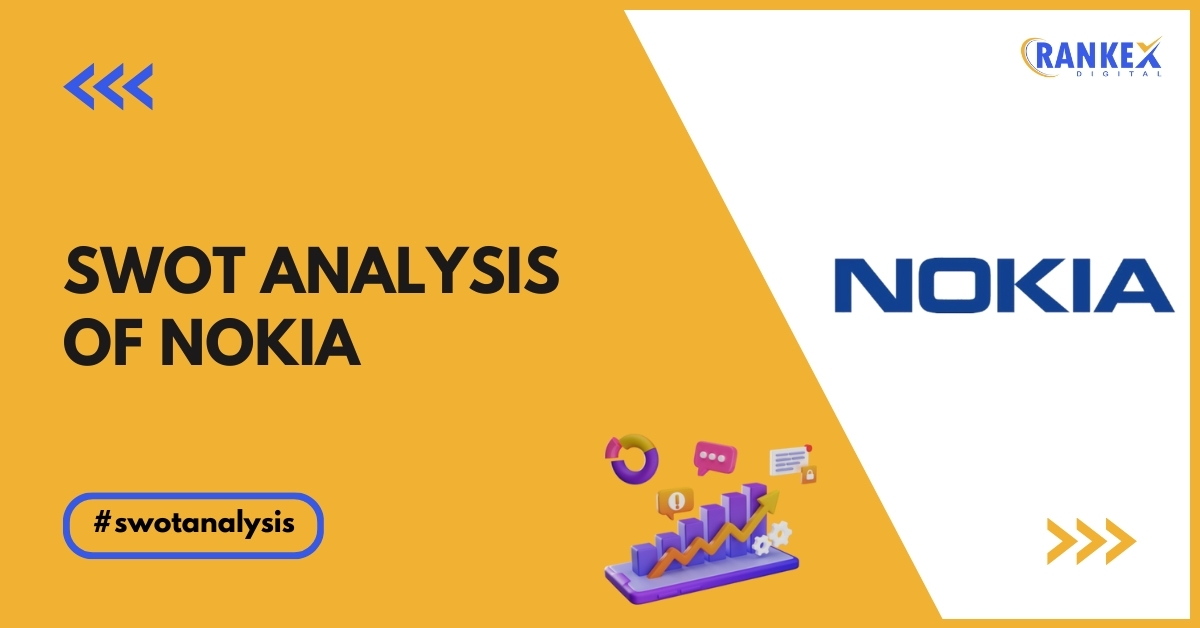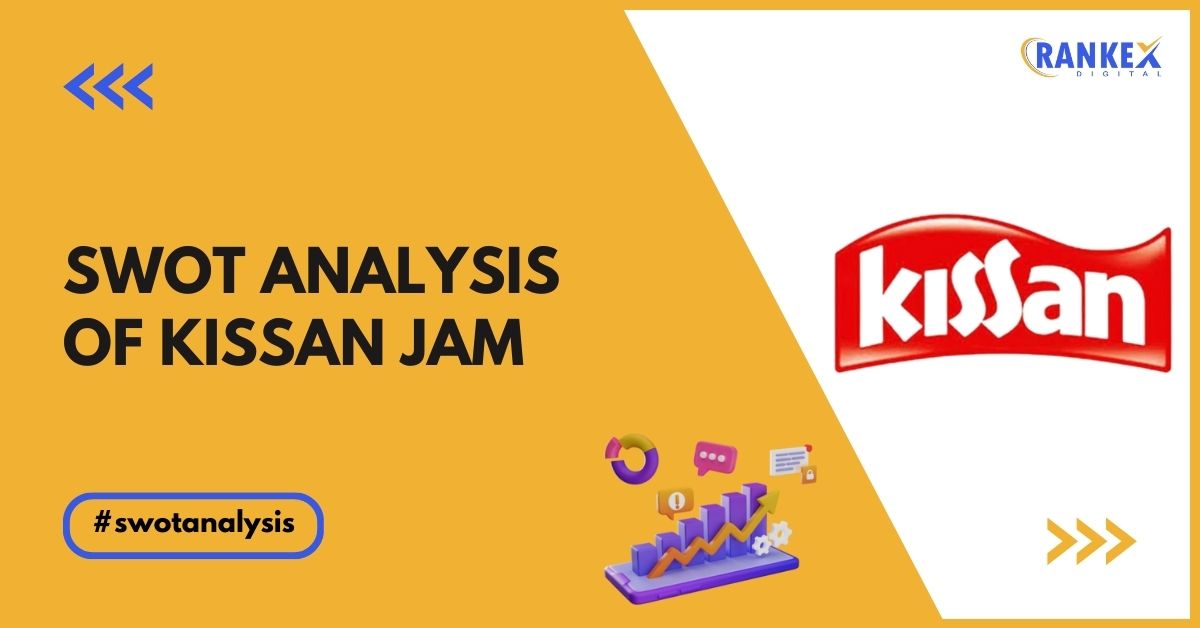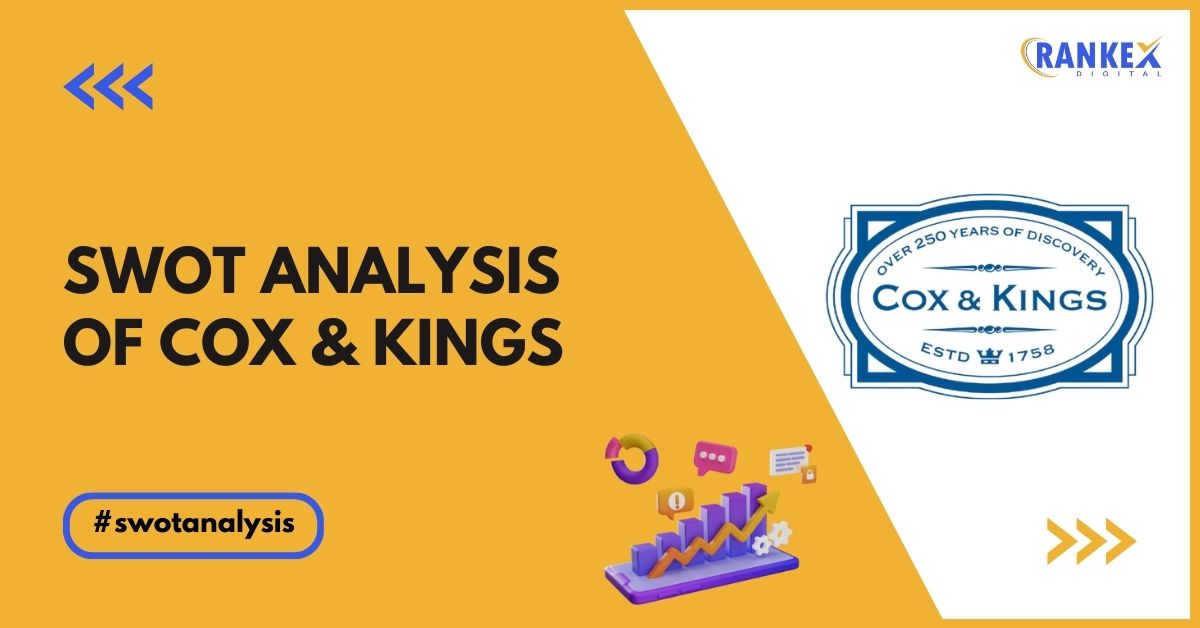Nokia has been a pioneer in the telecommunications industry for decades. Known for its resilience and adaptability, the company has navigated the rapidly changing technology landscape with a history rich in innovation.
With roots dating back to 1865 in Finland, Nokia rose to global prominence by shaping mobile communications in the 1990s and early 2000s.
Although it faced setbacks with the rise of smartphones, Nokia’s continuous evolution highlights the importance of conducting a SWOT analysis of Nokia to evaluate its current market position and future potential.
Table of Contents
Overview of Nokia
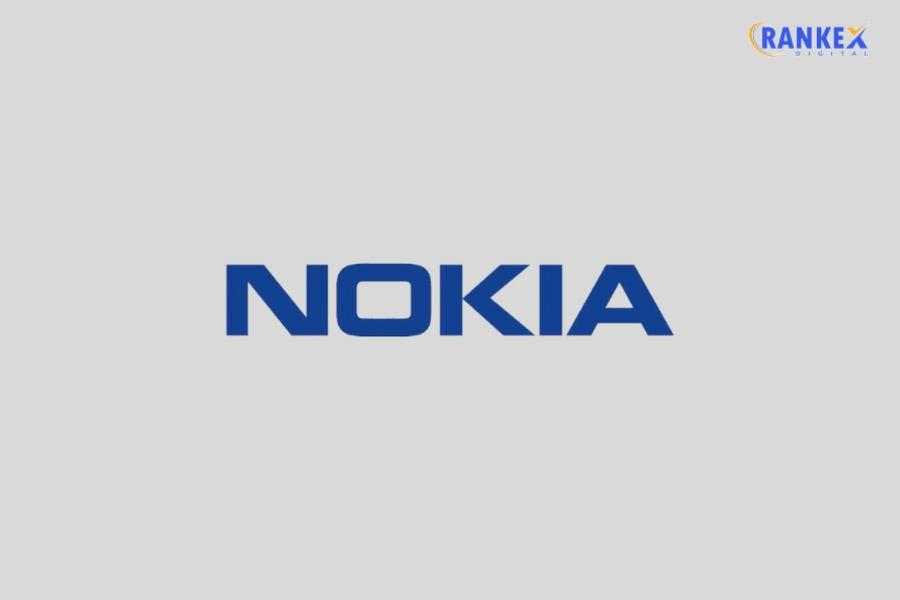
Founded in 1865, Nokia initially operated in the paper, rubber, and cable industries before transitioning into telecommunications in the 1980s. The company eventually became the world’s leading mobile phone manufacturer, renowned for its durable phones and innovative technology.
However, as smartphone technology evolved, Nokia lost its dominant position. In recent years, Nokia has reinvented itself as a leading provider of telecommunications infrastructure, focusing on 5G technology, network services, and software solutions.
Quick Stats About Nokia
| Attribute | Details |
|---|---|
| Founder | Fredrik Idestam |
| Year Founded | 1865 |
| Origin | Tampere, Finland |
| No. of Employees | Approx. 87,000 |
| CEO | Pekka Lundmark |
| Company Type | Public |
| Market Cap | Approximately $25 Billion |
| Annual Revenue | Around $23 Billion |
| Net Profit | Approx. $0.4 Billion |
Current News of Nokia
- 5G Network Expansion: Nokia has been actively expanding its 5G network capabilities, forming partnerships worldwide to support 5G infrastructure.
- Digital Transformation: Nokia is focused on digital transformation by integrating cloud, AI, and IoT technologies to enhance network performance and customer experience.
- Sustainability Goals: The company has set ambitious goals for sustainable operations, with an emphasis on reducing carbon emissions and fostering circular economy practices.
- Strategic Partnerships: Nokia has collaborated with key players in the technology industry, including alliances with Google Cloud and Microsoft Azure, to advance its technology services.
SWOT Analysis of Nokia
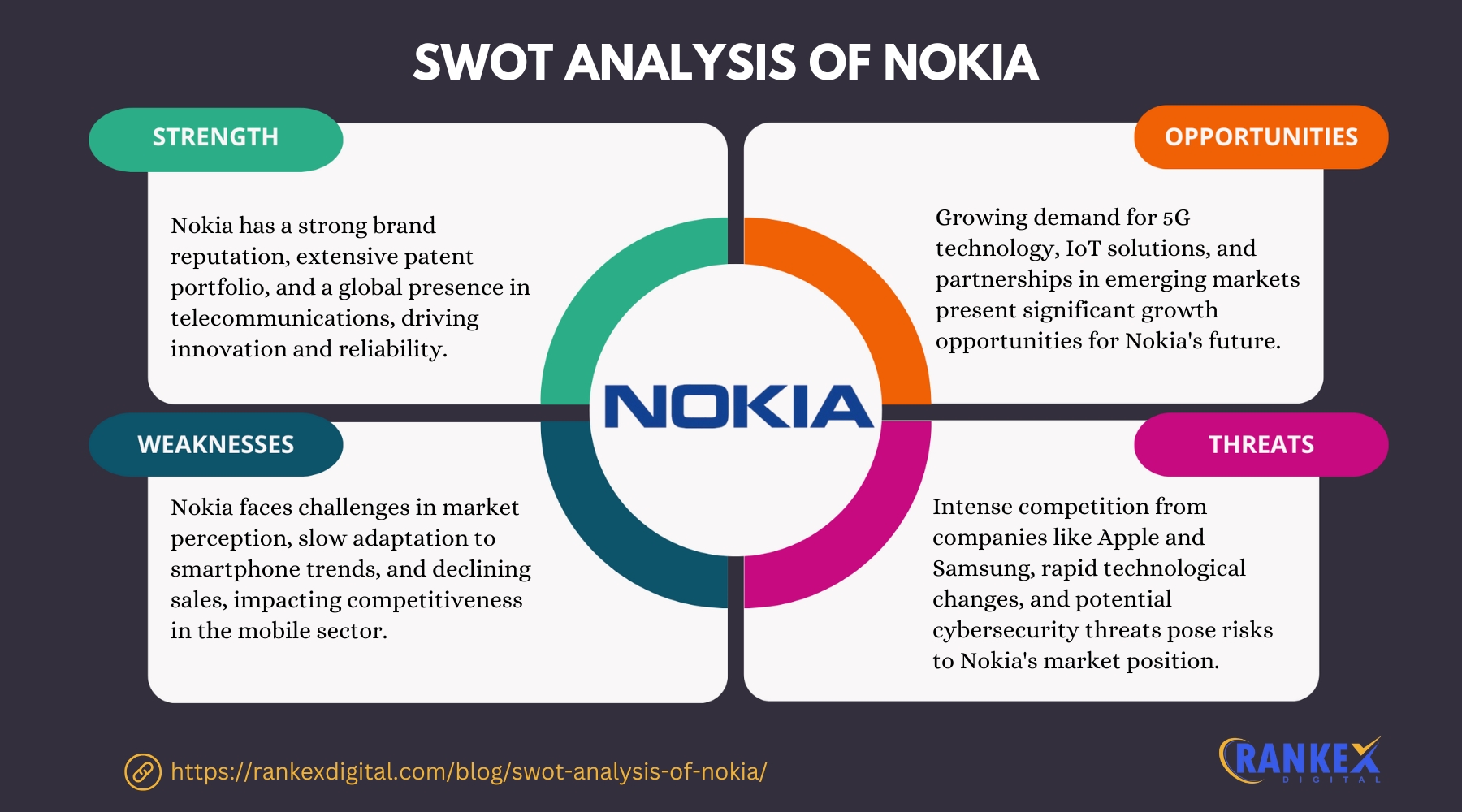
Strengths of Nokia
- Strong Brand Reputation:
Nokia has built a legacy as a trusted name in telecommunications, known for its durable products and innovative technologies. This reputation helps the company maintain customer loyalty and a competitive edge in the market. - Extensive R&D Investment:
Nokia invests significantly in research and development, focusing on emerging technologies like 5G, artificial intelligence (AI), and cloud computing. This commitment positions Nokia as a leader in next-generation communications, enabling it to develop cutting-edge solutions that meet the evolving needs of businesses and consumers. - Robust Patent Portfolio:
With a vast portfolio of patents, Nokia generates substantial revenue through licensing agreements. This intellectual property serves as a barrier to entry for competitors and provides Nokia with leverage in negotiations and partnerships. - Global Presence:
Operating in over 120 countries, Nokia’s global reach allows it to serve a diverse client base and mitigate risks associated with economic downturns in specific regions. This extensive network also facilitates the adoption of its technologies in various markets. - Strategic Partnerships:
Collaborations with major technology companies, telecommunications providers, and industry players enhance Nokia’s market position. These partnerships foster innovation and enable Nokia to offer integrated solutions, particularly in the competitive 5G and cloud markets.
Weaknesses of Nokia
- Past Market Share Loss:
Nokia’s failure to adapt quickly to the smartphone revolution led to a significant loss of market share to competitors like Apple and Samsung. This decline affected its brand image and overall financial health, making it a challenge to regain consumer confidence. - High Dependence on Network Infrastructure:
While Nokia excels in network infrastructure, its heavy reliance on this segment makes it vulnerable to shifts in demand and fierce competition. Any downturn in this sector could have a substantial impact on Nokia’s revenues. - Lower Profit Margins:
The telecommunications industry is characterized by intense competition and high R&D costs, which can squeeze profit margins. Nokia’s pricing strategies may also be impacted by competitors offering similar products at lower prices. - Limited Consumer Electronics Presence:
By exiting the smartphone market, Nokia has diminished its presence in consumer electronics. This move limits its brand reach and reduces opportunities for growth in a sector where consumer engagement is high. - Organizational Restructuring Challenges:
Nokia has undergone various restructuring initiatives to streamline operations and improve efficiency. However, these efforts can create complexities that affect decision-making speed and market responsiveness.
Opportunities for Nokia
- 5G Expansion:
As a leader in 5G technology, Nokia is poised to benefit from the increasing global demand for 5G infrastructure. The rollout of 5G networks provides significant growth potential as businesses and consumers seek faster and more reliable connectivity. - Digital Transformation and IoT:
The digital transformation wave and the rise of the Internet of Things (IoT) present opportunities for Nokia to enhance its network services and develop innovative software solutions. Companies are increasingly investing in connected devices, which creates demand for reliable network solutions. - Emerging Markets:
Nokia can capitalize on the growing demand for digital connectivity in emerging markets, where the need for telecommunications infrastructure is on the rise. This presents a chance to expand its market presence and diversify its revenue streams. - Green Technology and Sustainability:
With a growing emphasis on sustainability, Nokia can align its offerings with the increasing demand for eco-friendly technologies. By developing solutions that promote energy efficiency and reduce environmental impact, Nokia can enhance its brand appeal and attract socially conscious customers. - Enterprise Solutions Growth:
By providing specialized network solutions tailored to industries like healthcare, manufacturing, and automotive, Nokia can tap into high-growth markets. These sectors increasingly require advanced communication systems to enhance operational efficiency and drive innovation.
Threats to Nokia
- Intense Competition:
Nokia faces fierce competition from rivals such as Huawei, Ericsson, and Samsung, especially in the 5G and network infrastructure markets. This competition can pressure pricing and market share, affecting profitability. - Geopolitical Tensions:
Trade restrictions, sanctions, and geopolitical conflicts can disrupt Nokia’s international operations and partnerships. These tensions may limit access to markets and supply chains, impacting overall business performance. - Economic Fluctuations:
Global economic downturns can lead to reduced investments in network infrastructure, directly affecting Nokia’s growth prospects. Companies may delay or scale back technology investments during challenging economic times. - Technological Obsolescence:
The rapid pace of technological advancement necessitates constant innovation from Nokia to remain competitive. Failure to keep up with emerging technologies or shifts in consumer preferences could lead to obsolescence. - Cybersecurity Risks:
As Nokia becomes more integrated into digital networks, the risk of cybersecurity threats increases. Cyberattacks could compromise network integrity, harm customer trust, and result in significant financial losses.
Top Competitors of Nokia
- Huawei
- Apple iPhone
- Samsung
- Cisco Systems
- ZTE Corporation
Conclusion
The SWOT analysis of Nokia highlights its strong brand reputation, extensive R&D investment, and robust patent portfolio as crucial strengths.
However, Nokia also faces challenges such as intense competition, dependence on its network infrastructure business, and cybersecurity risks.
By leveraging opportunities in 5G, digital transformation, and emerging markets, Nokia has the potential to regain its competitive edge.
To secure its future in the rapidly evolving tech landscape, Nokia must address its weaknesses and navigate through the threats.
Frequently Asked Questions
1. What are Nokia’s strengths in the telecommunications industry?
Nokia’s strengths include a strong brand reputation, a rich patent portfolio, extensive R&D investment, and strategic partnerships, particularly in the 5G and cloud markets.
2. What are the main challenges Nokia faces in its business?
Nokia’s primary challenges include intense competition, reliance on network infrastructure, and the need for constant innovation to stay competitive.
3. How is Nokia leveraging 5G technology?
Nokia is a major player in the global 5G market, investing heavily in research and forming strategic partnerships to expand its 5G infrastructure services globally.
4. What opportunities does Nokia have in emerging markets?
Nokia has significant opportunities in emerging markets where there is growing demand for digital connectivity, 5G networks, and sustainable technology solutions.
5. Who are Nokia’s biggest competitors?
Nokia’s major competitors include Huawei, Ericsson, Samsung, Cisco Systems, and ZTE Corporation, all of whom are key players in the telecommunications and 5G technology space.

